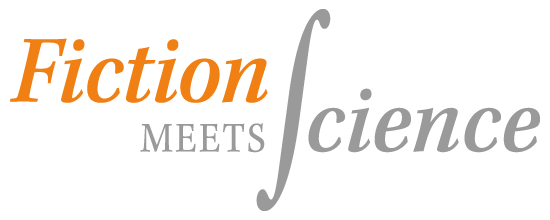2b. Emergence of the multi-dimensional scientist character
This project examines how
scientists are represented as “realistic,” multidimensional characters in
contemporary fiction. Realistic characters cause the reader to engage
emotionally with a fictional human, in this case one who comes in contact with
the world of knowledge step by step, experiencing all the and experiences all
the attendant epistemological problems.
The representation of scientists
as characters is perhaps the most widespread form of incorporating science into
fiction. Dating back to the 19th century, cultural stereotypes of
scientists—as awkward, unworldly, megalomaniac, predominantly male, etc.—have
been based on the idea that science is an all-consuming, inhuman enterprise
practiced by individuals with mono-dimensional interests and personalities (cf.
Haynes 1994). Literary characters have been drawn from these stereotypes,
which has not made for realistic novels about science. Such stereotypical
figures are poorly suited to the role of “problematic individual,” a type of
multi-dimensional character that Georg Lukács defined as a constitutive
structural element of the novel in his classic Theory of the Novel (1916;
1971). In the past couple of decades, novelists have created characters better
suited to this intrinsic component of the novel. In this project we examine the
fictional strategies used to represent these scientist characters, rendering
them less socially opaque and more “human” to readers.
Recent novels feature
scientist
characters with all the complexities and flaws of real humans. Mendel’s
Dwarf (provides an excellent example of this, as the scientist protagonist,
Ben, is an achondroplastic dwarf). Perceived by others as an “abnormal” human,
Ben seeks genetic answers for his own condition, even if it means engaging in
research that may be used in an ethically questionable way. In Solar,
protagonist Michael Beard’s moral failures beg the question of whether or not
it is ethical to take credit for a junior colleague’s work: Is it more
important that the right person get the credit, or that new scientific
discoveries get promulgated at any cost? Both of these novels use
multidimensional characters to ask questions about the
relationship between the structures of scientific practice and human progress.
Can science ever fulfill its promise of knowledge and truth, or are objectivity
and neutrality doomed by the all-too-human qualities (embodied in these
characters) of its practitioners and consumers?
The realistic representation
of
scientist characters also relies on internal focalization through a narrator,
sometimes first-person, sometimes third-person. Focalization means that the
information the reader gets is limited to a given character’s point of view,
which then implies that one cannot separate character and narration in the
modern novel. McEwan’s Enduring Love, Saturday, and Solar all
feature realistic scientists who are the focal points of the
narratives—characters that are fraught with human qualities and are able to
drive the novels’ plots because of the way that they limit the reader’s
perspective. Lodge’s Thinks… provides another example of problematic
characterization with a protagonist and partial narrator who is a cognitive
scientist.
Critical approaches have not yet
considered what it means for scientists to be featured as multidimensional
characters in these novels. Joe Rose in Enduring Love, for example, is
discussed as a “figure whose professional role is to mediate between scientific
specialization and the public” (Amigoni 2008: 160); Henry Perowne in Saturday
is a “type” embodying the particular historical moment in Martin Ryle’s
analysis, allowing the focalizing over-rational consciousness to make a
political statement (2010: 26); and the cognitive scientist protagonist in Thinks…
“functions as the main locus for […] evolutionary psychological speculations”
(Oikkonen 2010: 600). The de-emphasis on character per se causes these
critics to see the scientist merely as a representative of something larger. In
this project, we will shift the emphasis by using close textual analysis to
illuminate the character of the scientist as an individual, limited human, one
that helps readers understand many of the epistemological concerns involved in
the production and implementation of scientific knowledge.
In Enduring
Love, for
example, we see that Joe Rose is not merely a rationalist “type,” but a
complicated failed academic researcher whose earlier experience of doing
science informs his interpretation of key events. He believes that another
character is deeply infatuated with him, and he uses a scientific diagnosis to
understand the other’s behavior. Because this multidimensional character is also
the point of narrative focalization, the reader identifies with Rose’s
predicament and is led to ask questions about the nature of scientific
knowledge. Similarly, Ralph in Thinks… consistently engages in
discussion about his research with Helen Reed, a novelist. Through these
discussions—sometimes through the perspective of Ralph and sometimes through
that of Helen—the reader comes to understand the limits of Ralph’s theories and
learns to think about consciousness and narrative form from the perspectives of
both cognitive science and literature. It is only by identifying with these
multidimensional, problematic characters that the reader comes to ask critical
questions about scientific knowledge, which is, we hypothesize, a common trait
of this seemingly newer breed of science novel.
Our initial corpus comprises
a
dozen contemporary novels that feature “realistic,” “problematic,”
multidimensional scientist characters and have received a modus of critical
attention in either the literary or scientific communities. In this way, we
broaden the critical sweep beyond high profile literary authors like McEwan and
Lodge to include recent works by emerging authors whose particular forms of
literary innovation may derive from a scientific rather than a humanistic
literacy and thus elude mainstream literary critics whose traditional concepts
of quality and significance are based on the latter. Based on our findings, we
consider what the emergence of such characters may mean for the
contemporary evolution of the novel and for the forms of literacy required to
create and interpret it.
